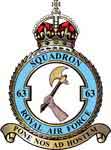 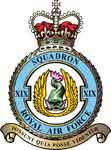  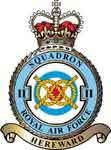 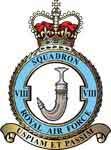
William P Sheppard 8th September 1931 - 2nd November 2012
Recalling, as others, less about Bill than we would have liked but we all did admire his splendid characteristic of so following his own individual star wherever that led. To my last two personal and some indirect e-mails to Bill and in response to his last rather splendid one to me at the end of May, I wrote for him not to bother further with any replies, knowing how ill he already was.
(Pete Jarvis's note: Bill's last e-mail to me just before his 81st birthday indicated that he was suffering from floating cancerous bodies which became apparent about May 2012 and had taken to his bed through complete debilitation and tiredness. His close companions, Fox and Shiriba, had been re-homed successfully. He did not reply to my last e-mail which was returned by his "granddaughter" on November 5th to say that "Walter had died")
In Aden and 43 (F), I only overlapped with Bill for a few of his final months with 1417 FR Flight but took over the RAF Khormaksar M/C Club (subsequently expanded into the bigger Aden Forces Motorcycle Club) on Bill's departure back to UK. I had managed to get my BMW R69 motorbike flown out to Aden and Bill too had a motorbike there, which might explain some of his other activities in Aden and being a bit more distanced from his 8 Sqn mates. No. 8 Sqn's boss, Tammy Syme DFC, recalls that Bill was an accomplished horseman and keen on the outdoor life.
Bill was born on 8th September 1931, was commissioned on 16th January, 1952, was promoted Flt Lt on 16th July, 1956 and later retired on 10th December, 1970. Rumour has it that Bill and Mike Goodfellow, just about finishing their Harvard advanced flying after FHTs, were nearly not awarded their Wings after a certain flight involving some exuberant beat-ups, which were carried out not that much above terra firma.
(Pete Jarvis's note: Confirm that Weppard was on 63 between 1956 and 1958 when the Squadron disbanded under Sandys axe. Bill was part of the successful Dacre gunnery team for those years.)
Am pretty certain that Bill started with 63 Sqn firstly on Meteor Mk 8's at Waterbeach before and with Hunters, and I was hoping to have had corroboration that he subsequently went onto 19 Sqn at Church Fenton & Leconfield but somewhere there was CFS and then 2 Squadron 1960-62? at Jever. (Pete Jarvis: Confirm) Later in Aden 1963-65 he started on 8 Squadron Hunter F/GA9s before crossing over onto 1417 FR Flight serving Strike Wing's and the Command's fighter reconnaissance requirements. With his old address up in Garstang, Bill must have sold or vacated that quite a few years ago now.
( Pete Jarvis: Bill sold up in early 2009 and motored to Tunisia in April 2009 stopping with PJ for 2 days In Sussex. He had a digestive problem at that time. Duncan Mitchell was his confidante at Garstang. Knew Bill for 20 years and attended to his UK affairs when he retired abroad)
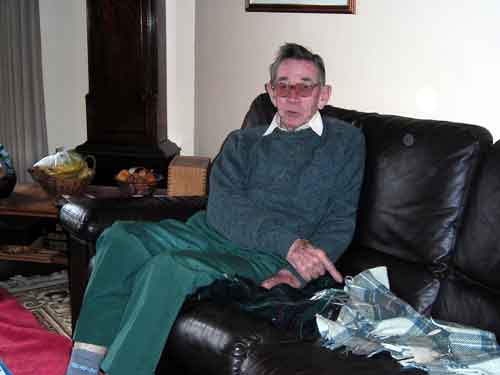
Roger Pyrah, I recall, remembered well his arrival sector recce trip with Bill showing him exactly how to fly for their wadi-bashing recce work, on Roger's arrival on 1417 in Aden. As similarly reported from Bill's earlier 63 Sqn Meteor Mk8 friends, on 8 Squadron Nick Adamson among others noted that Bill in the air was both experienced and a very able QFI/IRE but tended to mix socially almost entirely with the technicians rather than his fellow pilots.
( Pete Jarvis: Played football with the 63 Sqn airmen's team!)
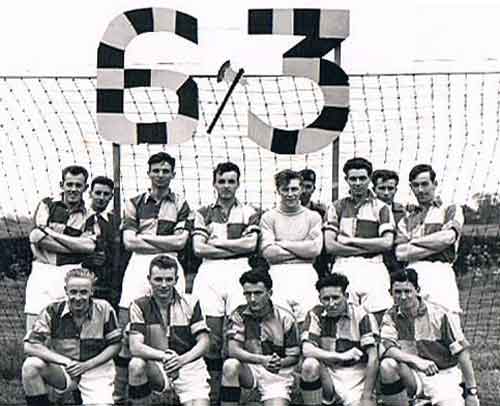
Bill moved onto 1417 Flight Hunter FR 10's about mid-1963/ early 1964. Nick left 8 in June 1964 but crossed paths again with Bill when they both took part in the COIN aircraft trial in Malaya (Jet Provost Trials Unit (Far East)), using Jet Provost T4's while also testing its suitability for airborne FAC work. This was just before 25yr old Fg Off Pete Loveday on 20 Sqn was so tragically killed during a low pass at Alor Star after hitting a tree, which tore his starboard wing off on 5th February, 1966.
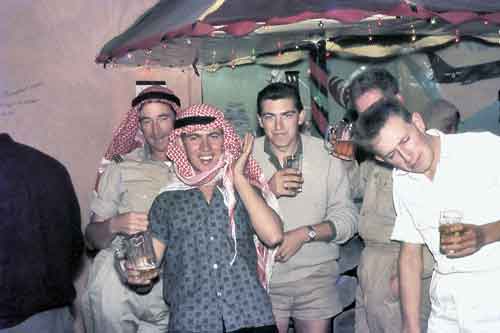
Bill in Aden with airmen Taff , Brian & two others (via Ray Deacon again)
(Pete Jarvis: There is evidence in David Watkins, RAF Aerobatic Teams, of Bill's role as number 4 in "Four's 4" on 4 Squadron at Gutesloh in 1968. He also displayed the Swift during his time on 2 Sqn in the early sixties))
Surprisingly little extra came back from Bill's younger brother, Tom (was OC Sharjah and has written books with fine photos on Desert travel and 4 x 4s), whom I knew not well but better than Bill. Sadly Tom and Bill both seemed to have been rather distant from each other for many years, even though they both became so deeply involved in different aspects of the Middle East.
We are indebted here to Tim Notley, on FAA Naval exchange (I imagine he preceding Nick Kerr) with some overlap with Bill on 8 Sqn, who is now living in Barcelona, where Graham Williams saw him recently. Tim kindly wrote in to me also after this, which are extracts from his earlier letter to Graham etc:
"Bill had an envelope full of all his official documents (passport etc) that he had instructed Lassárd to deliver to one of the Brit visitors to be forwarded to the relevant authorities..... No reply from a couple of emails I sent to Lassárd, translated into French by my French speaking daughter..... Have tried to call Lassárd (the oldest "child", who was 5 years old when Bill originally met him, and became his adopted "son" and is now 30 plus) but without any luck but will keep trying for a bit and pass on any news. Yes it is sad. But Bill led an altruistic life in Tunisia building and housing about 20+ members of his "family"..... I will try and find out a bit more from Julia Smyth (Nick Adamson's contact at the British Embassy in Tunis however had returned already to UK). Best wishes, Tim"
Graham..... Bill knew in the last few months that some of his 8 Squadron mates were asking after him. Apart from saying in an email about 2 years ago, where he mentioned that his elder brother had had a formal school education and that he did not (Bill, educated himself in his early 20s enough to enter the RAF), he never mentioned his brother again, and I always assumed that the elder brother had died. Bill, in the end was relaxed in his last days, having found somebody to look after his two dogs (he said that these were his best friends), had arranged to be buried in a Christian burial ground nearby, had finally arranged for his UK money to be inherited by Lassárd (so assumed it had arrived), and one or two other things; so he felt that he could die relaxed and contented.
Bill was visited by a neighbour from UK at the early part of this year. In an unemployed situation about 30 years ago he had worked as a gardener for this neighbour and enjoyed the work. Don't know anything about this neighbour but assume he will find out about Bill's death. In 2 plus years of constant interchange of emails with Bill (we shared an interest in Arab history and the "Arab Spring") Bill has never mentioned to me any other UK contact - apart from this "neighbour".... Did receive, today, an email presume from Lassárd saying, "Thank you veryyyy much" in answer to my sympathy email..... Cheers, Tim
And then: Hallo Alan,
Thank you for your E.... Unfortunately, apart from learning a little about Bill's really quite amazingly altruistic life near Hammamet in Tunisia from about 1978 until he died this year, I cannot really add anything, eg now I learn from you that he had a younger brother Tom, when I thought he only had a deceased elder brother. Apart from respecting his professionalism as a QFI/IRE Hunter pilot, our time on 8 Squadron overlapped only by about a year; I returning to the RN mid1964. Since then we had no contact with each other apart from the last 2+ years where we exchanged many emails mainly about our mutual interest in Arab history and the Arab Spring - he of course mainly telling me from his personal experiences with the Arabs, and I yapping about what I had been reading but fascinating for me.
His life relating to his Tunisian "Family" from 1977 to the present was amazing and, of course heartwarming. I did suggest to him that his time there would have been of great interest to a Travel writer friend here in Barcelona, but Bill modestly thought no - a pity because he was an interesting character, even if difficult to know in those early days in the RAF.
His story with this family started when Lazzárd (aged 5 yrs) and his brother and sister, who befriend Bill when he was alone on holiday in his campervan. Bill gets to know the rest of the family, and the children get to love Bill, who suddenly finds genuine affection in his lonely life. Also he sees that his "family" (and later his extended "family" to be) live in straitened circumstances. So over a period from 1979 to 2003, he has 3 houses built - two of which have extensions added to provide living accommodation for 28 people, including himself. However, I'm sure you know all this. I do have details e.g. names etc of his "family", but assume that this would not be useful for an obituary - but let me know if you think otherwise. Very interesting that your son is out in Tunisia on an Arab Spring conference right now! Cheers, Tim
XXXXXXXXXXXXXXXXXXXXXXXXXXXXXXXXXXXX
Green Endorsment - 6th November 1969
Hunter FR 10
A Nasty Situation
Flight Lieutenant Sheppard had been airborne for about 20 minutes on a properly authorised low level sortie over N Germany when he suddenly experienced a marked reduction in engine RPM. From investigation it was established that only 6,600 RPM could be obtained at full throttle and, even so, the engine was fluctuating through a 200 RPM range. At the time the aircraft was some 20 miles NNE of Bremen Airport at low level and so the pilot started a climbing turn towards this airfield, aiming to overfly the civil airport and land at the GAF base at Ahlhorn. This sound planning of his diversion was to pay dividends shortly afterwards.
Meanwhile the pilot had managed to climb his aircraft to 3,000 feet but, realising that he still had a high fuel state, he jettisoned his external tanks shortly afterwards over open country. At the same time he changed to Bremen tower frequency and made a PAN call. However, matters were not to rest there. Shortly afterwards the engine revs further decayed to a maximum of 5,400 RPM, which meant that the pilot was unable to maintain height thereafter. He was obliged to amend his diversion to Bremen, the closer airfield, and at the same time he upgraded his emergency to a MAYDAY.
The weather in the area was generally good but, as always, the visibility around Bremen was seriously impaired by industrial haze, and the pilot estimated the in flight visibility at around 1,500 yards. For the sake of the uninitiated, there is no emergency service available on 243 mcs comparable with the UK system and, in any case, the aircraft was too low to have received any useful assistance. Bremen, on the other hand, had neither radar nor DF to assist the pilot in finding the airfield and he, not unnaturally, was reluctant to change frequency at such a critical stage. However, by this time Bremen had alerted the military ATCC at Weser and through some very sharp controlling, during which time Weser relayed messages to the pilot via land line and the Bremen tower, it was possible to fix the aircraft's position. Thereafter, ranges and bearings were passed to the pilot until he was in contact with the civilian airfield.
Despite this most commendable display by the ground con In turning finals the aircraft was flown through the extended centre line of the runway, through being unavoidably close in downwind, and the aircraft eventually crossed the airfield boundary some 70 yards North of the runway, at low airspeed, just clear of the ground, and with undercarriage and flaps still retracted. From this extremely uncomfortable position the pilot managed to get his aircraft onto the runway, but he was obliged to leave undercarriage selection so late that the port leg collapsed on touchdown. The aircraft came to rest just clear of the runway, having taken a couple of runway lights with it.
The actual cause of the engine malfunction will not be known for sure until Rolls-Royce have completed a strip examination, but from preliminary investigation at Gutersloh it looked like a case of compressor failure. The damage to the port mainplane was consistent with a landing on the wing tip and the aircraft was assessed as Cat 2.
For the rest, it is pretty clear that the incident was dealt with in a most professional manner by all concerned. Firstly, when the pilot first saw his diversion airfield at 500 feet, he would have been fully justified in ejecting, instead of which he remained with the aircraft and carried out a skilful forced landing from a most unenviable position. It was bad luck indeed that there was insufficient time for the port undercarriage to lock down, and Flight Lieutenant Sheppard has been awarded a green endorsement for his handling of the incident. Secondly, as the pilot readily admits, the story might have ended very differently but for the timely display of initiative by the German civil and military controllers. They have been sent letters of warm appreciation for their highly professional controlling. In all, a satisfactoery ending to a serious ermergency.
GREEN ENDORSMENT
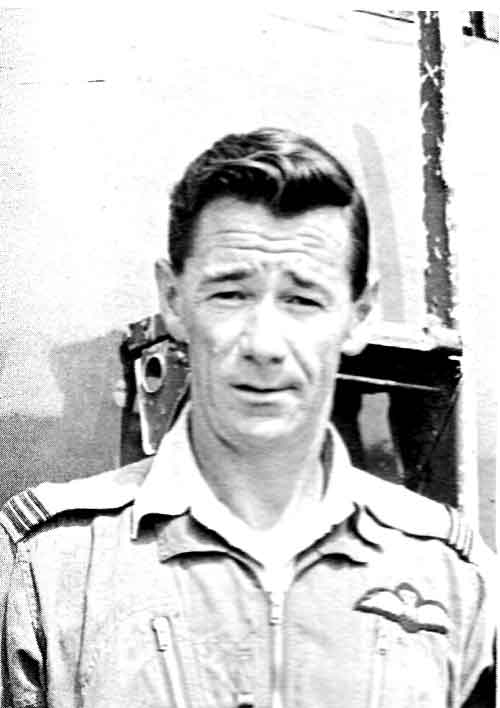
CITATION FOR GREEN ENDORSMENT
INSTANCES OF EXCEPTIONAL FLYING SKILL AND JUDGEMENT RELAT1NG TO HUNTER
FORCED LANDING AT BREMEN CIVIL AIRPORT - 6 TH NOVEMBER 1969
On 6th November, 1969, Flight Lieutenant W.F. Sheppard was flying a Hunter FR10 on a low level reconnaissance sortie over Northern Germany when he experienced partial engine failure 20 miles North East of Bremen. He immediately pulled up to three thousand feet and headed towards his nearest diversion airfield at Ahlhorn, overflying Bremen Airport en route as a precaution. A few minutes later engine rpm dropped to such an extent that Flight Lieutenant Sheppard was unable to maintain height. Bearings and distance to Bremen Airport were passed to him from Weser Control. By this time he had been forced to descend to a lower altitude where the in-flight visibility was reduced to 1,500 metres. When down to 500 feet, Flight Lieutenant Sheppard found himself three quarters of a mile South of Bremen Airport, going downwind in the wrong direction. From this position he was cleared to land on the runway reciprocal, but being far too close, had to fly through the extended centre line on the final turn. Skilfully manoevring his aircraft, Flight Lieutenant Sheppard managed to execute a tight turn at low altitude and with a very low airspeed to cross the airfield boundary 70 yards North of the runway at 15 feet. Emergency flaps and undercarriage were selected at the last moment, and Flight Lieutenant Sheppard successfully landed on the runway. The circumstances in which the pilot found himself would have justified a low level ejection; however, Flight Lieutenant Sheppard calmly assessed the situation and saved his aircraft by his exceptional flying skill and sound judgement. In the handling of this serious emergency he displayed the great determination and the highest standards of airmanship for which a Green Endorsement has been awarded.
|







